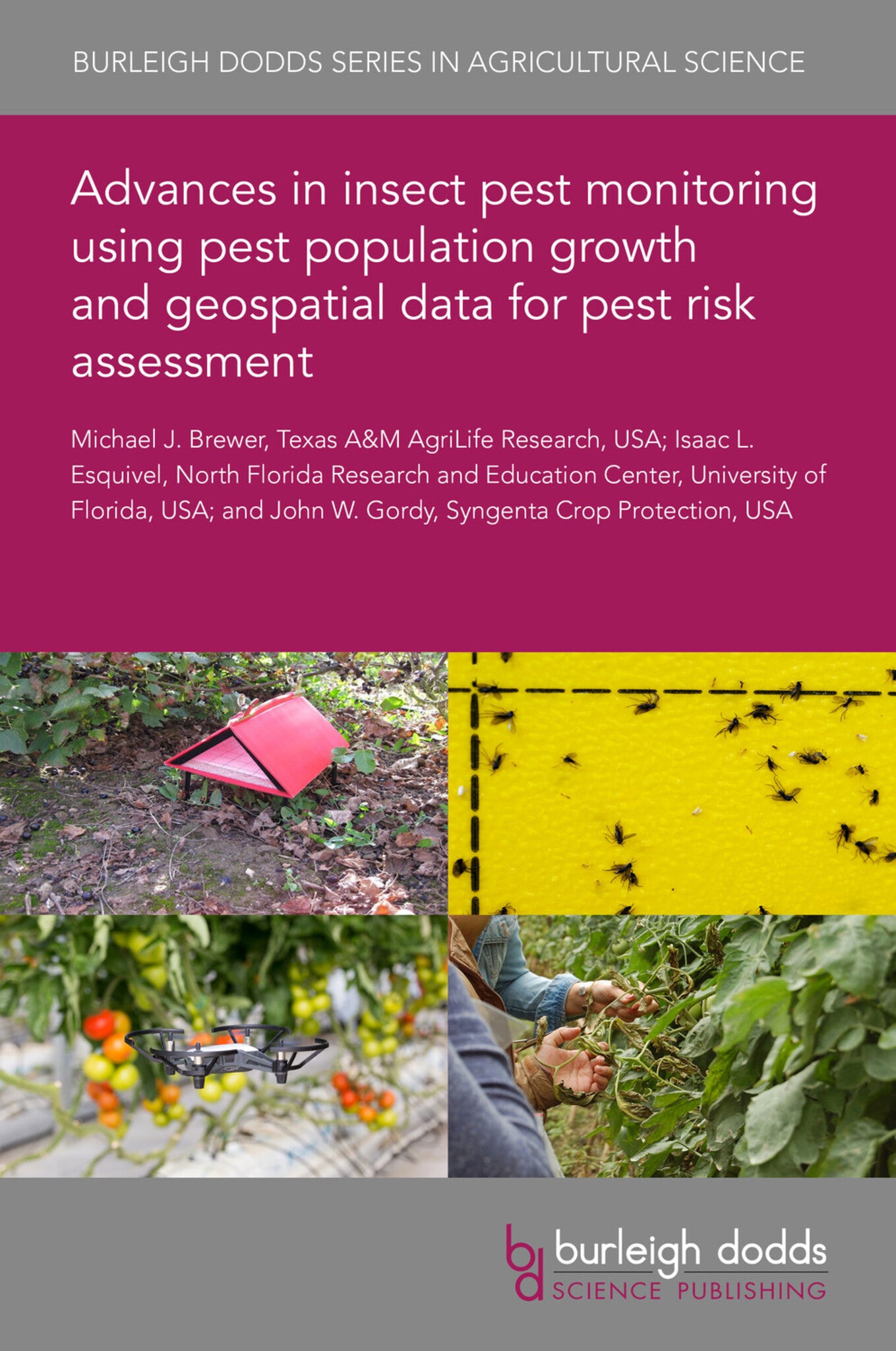We're sorry. An error has occurred
Please cancel or retry.
Advances in insect pest monitoring using pest population growth and geospatial data for pest risk assessment

Some error occured while loading the Quick View. Please close the Quick View and try reloading the page.
Couldn't load pickup availability
- Format:
-
24 April 2023

Insect pest monitoring serves to evaluate pest severity over time and space. Special attention is given to acquiring and estimating pest population levels and affiliated variables that may influence trajectory of pest severity within and across crops and other habitat. The chapter reviews approaches and provides case studies of current advances that are in development or have been applied in operational integrated pest management (IPM) systems. We first review incorporating knowledge of expected pest population growth to adjust economic thresholds for use in applying remedial IPM tactics to individual fields. The chapter then turns to principles and advancements in using spatial data, including spatially-referenced pest, crop, and remote sensing data. Spatial data linked to insect pest monitoring may improve strategic use of remedial IPM tactics at the field level and use of preventive IPM tactics at larger scales.

TECHNOLOGY & ENGINEERING / Pest Control, Pest control / plant diseases, TECHNOLOGY & ENGINEERING / Agriculture / Agronomy / Crop Science, TECHNOLOGY & ENGINEERING / Agriculture / Sustainable Agriculture, Agronomy and crop production, Sustainable agriculture, Agricultural science

- 1 Introduction
- 2 Pest monitoring basics and economic threshold adjustments
- 3 Geospatial data for pest risk assessment
- 4 Conclusion and future trends in research
- 5 Where to look for further information
- 6 Acknowledgements
- 7 References



